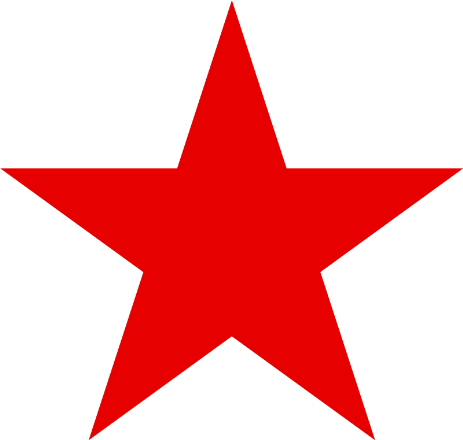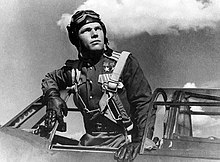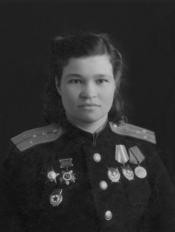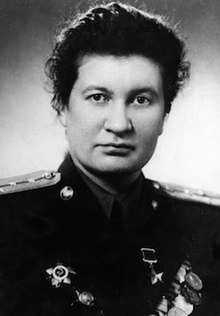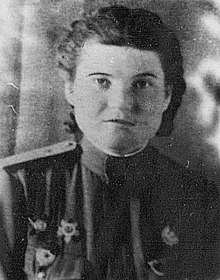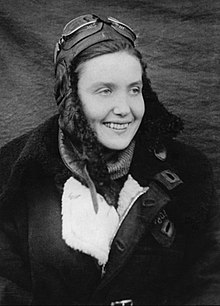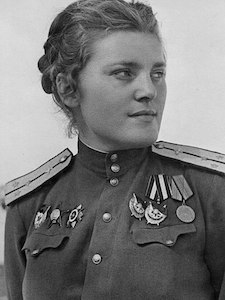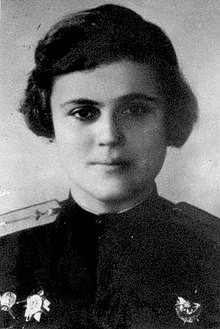Le forze aeree Sovietiche - Myouth - Ricordi degli anni '70
Menu principale:
Le forze aeree Sovietiche
Modellismo > Aerei > Yakovlev Yak-3
Bandiera dell'Aeronautica Militare Sovietica
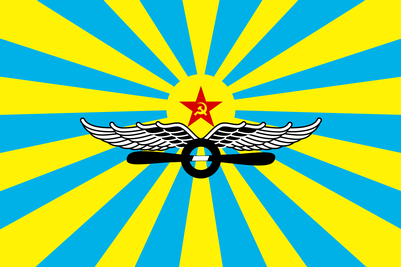
L'Aeronautica militare sovietica
L'aeronautica militare sovietica, nota come Voenno-vozdušnye sily o VVS, era alla fine degli anni trenta un'aviazione molto consistente sul piano quantitativo (si trattava della più numerosa aviazione del mondo), e in rapida evoluzione sul piano qualitativo. Alcuni dei suoi piloti avevano già una considerevole esperienza di combattimento, acquisita in Spagna o in Mongolia(dove i sovietici avevano affrontato le truppe giapponesi già padrone della Manciuria nei sanguinosi scontri che vanno sotto il nome di incidente di Nomonhan). Tuttavia, la VVS aveva perso molti dei suoi alti ufficiali nel corso della grande purga con cui Iosif Stalin, tra il 1937 e il 1939, aveva punito un complotto ai suoi danni organizzato da Jan Gamarnik con la collaborazione dell'Armata Rossa e dell'aeronautica.
Nel periodo di relativa tranquillità che andò dalla fine del 1939 a tutto il 1940 (interrotto solo dalla breve guerra d'inverno contro la Finlandia) la VVS si riorganizzò ed emerse in Russia un nuovo gruppo di giovani progettisti: Ilyushin, Mikoyan e Gurevich, Yakovlev, Lavochkin, Sukhoi, Petljakov e altri. Essi avrebbero dato origine ad aeroplani da attacco al suolo come gli Il-2 e i Pe-2 e a caccia come i MiG-1, i LaGG-1 e gli Yak-1 (che avrebbero presto soppiantato gli I-16).
Tra il 1939 e il 1940 l'industria aeronautica sovietica produsse in media 400 caccia al mese, e le sue numerose scuole di volo del territorio russo formarono piloti a un ritmo paragonabile. Quando, il 22 giugno 1941, la Germania avviò l'operazione Barbarossa, erano inquadrati nella VVS circa 15 000 aeroplani.
Credits: Wikipedia
Soviet Air Forces
At the outbreak of World War II, the Soviet military was not yet at a level of readiness suitable for winning a war: Joseph Stalin had said in 1931 Soviet industry was "50 to 100 years behind" the Western powers. By the end of the war, Soviet annual aircraft production had risen sharply, reaching 40,241 in 1944. Some 157,261 machines were produced during the Great Patriotic War, 125,655 being of combat types.
One of the main reasons for the large aircraft losses in the initial period of war with Germany was not the lack of modern tactics, but the lack of experienced pilots and ground support crews, the destruction of many aircraft on the runways due to command failure to disperse them, and the rapid advance of Heer troops, forcing the Soviet pilots on the defensive during Operation Barbarossa, while being confronted with more modern German designs. In the first few days of the invasion of the Soviet Union, the Luftwaffe destroyed some 2,000 Soviet aircraft, most on the ground, at a loss of only 35 (of which 15 were non-combat-related).
The principal VVS aircraft during World War II were the Ilyushin Il-2 Shturmovik armored ground attack monoplane and the series of AS Yakovlev OKB-115 designed single-engined fighters, beginning with the Yak-1 and its successors. The Il-2 became (at 36,183 built) the most produced military aircraft of all time, with the four main versions of Yak fighters (the Yak-1, −3, −7 and −9) being slightly more numerous, at a total of 36,716 among them. These two main types together accounted for about half the strength of the VVS for most of the Great Patriotic War. The Yak-1 was a modern 1940 design and had room for development, unlike the mature 1935-origin Messerschmitt Bf 109. TheYak-9 brought the VVS to parity with the Luftwaffe and eventually allowed it to gain the upper hand, until in 1944, many Luftwaffe pilots deliberately avoided combat with the last and best variant, the out-of-sequence numbered Yak-3. The other main VVS types were Lavochkin fighters (mainly the La-5), the Petlyakov Pe-2 twin engined attack-bombers, and a basic but functional and versatile medium bomber, the Ilyushin Il-4.
The 31st Bomber Aviation Regiment, equipped with Pe-2s and commanded by Colonel Fyodor Ivanovich Dobysh, was one of the first Guards bomber units in the Air Forces – the 4th Guards Bomber Aviation Regiment (ru:4-й гвардейский пикирующий бомбардировочный авиационный полк). The title was conferred on the regiment for its actions on the Leningrad Front in November–December 1941 during defensive operations and the Soviet counterattack near Tikhvin.
Women
Alone among World War II combatants, the Soviet Air Force initiated a program to bring women with existing flying training into combat air groups. Marina Raskova, one of very few women in the VVS prior to the war, used her influence with Stalin to form three all-female air regiments: the 586th Fighter Aviation Regiment, the 587th Bomber Aviation Regiment, and the 588th Night Bomber Aviation Regiment (a.k.a. the Night Witches.) Women flew aircraft so heavy that sometimes two of them were required to haul back on the joystick on takeoff. Another pilot, Olga Yemshokaya, flying at ten thousand feet, discovered a mouse, put there by mischievous male colleagues, in her cockpit. Being more worried by the rodent than the German fighter threat, she hunted for, eventually caught and ejected it.
Due to their achievements in battle, the latter two air force units were honored by being renamed Guards units. Beyond the three official regiments, individual Soviet women sometimes served alongside airmen in otherwise all-male groups. Women pilots, navigators, gunners, mechanics, armament specialists and other female ground personnel made up more than 3,000 fighting members of the VVS. Women pilots flew 24,000 sorties. From this effort came the world's only two female fighter aces: Lydia Litvyak and Katya Budanova.
Credits: Wikipedia
| Nome | VVS | PVO | ADD (DBO) | Fleets' units |
Impiego | missioni più frequenti: scorta, sorveglianza, appoggio alle truppe di terra, attacco, bombardamento a corto raggio e ricognizione,... | difesa (intercettamento di bombardieri/ricognitori) nelle aree assegnate | bombardamento a lungo raggioe ricognizione | missioni per la flotta Baltica (BF, Baltic fleet), ChF (Flotta del Mar Nero), TF (flotta del Pacifico), SF (flotta del Nord) |
| Name | VVS | PVO | ADD (DBO) | Fleets' units |
task | common missions: escort, patrol, cover of ground troops, attack, short-range bombing and recon,... | defense (intercept of bombers/recons) of assigned areas | long-range bombing and recon | naval missions for BF (Baltic fleet), ChF (Black sea fleet), TF (Pacific fleet), SF (Northern fleet) |
Soviet aerial tactical markings of WWII
Oltre allle stelle rosse (i simboli nazionali), alcune unità sovietiche avano i propri simboli. Questi simboli potevano essere usati per un tempo limitato per .poi cambiare o scomparire. Molti piloti, poi, potevano avere simboli personali.
Soviet aerial tactical markings of WWII
Along with red stars (the national symbols), some Soviet units had own insignias. These markings could be related to a limited time and change or disappear. Also many pilots had individual emblems.
Navigation and Abbreviations. | |||
IAP = fighter regiment ShAP = attack regiment BAP = bomber regiment SAP = mixed regiment RAP = recon regiment | IAD = fighter division ShAD = attack division BAD = bomber division SAD = mixed division | IAK = fighter corps ShAK = attack corps BAK = bomber corps SAK = mixed corps | VA = aerial army KBF = baltic fleet SF = north fleet ChF = blacksea fleet PVO = aerial defense |
G char in the begin = Guards S = speed, N = night, L = light, T = heavy, B = shortrange, D = longrange, P = dive, O = separate | |||
1 VA (1st air army), 1942. 4 VA (4th air army), 1945. | |||
Credits/Fonte: War Is Over
 | 303 IAD of 1 VA : white lightning at fuselages | ||||
   | 9 GIAP former 69 IAP : La, red nose; red, light-blue and yellow spinners of 1st, 2nd and 3rd squadrons. |  | Normandie-Neman regiment, Yak-9 and Yak-3 : tricolor spinner, earlier - little french roundel at fuselage of Yak-1. | 18 GIAP (Yak, former 6 IAP) | 139 GIAP (Yak, former 20 IAP) |
Il mio aereo
My model plane
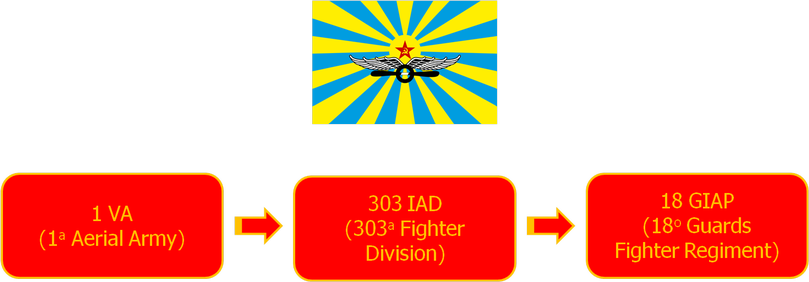
Home Page | Modellismo | Topolini | Altri Disney | Linus | Asterix | Diabolik | Giornalini di guerra | Western | Riviste | Romanzi | Mappa generale del sito
